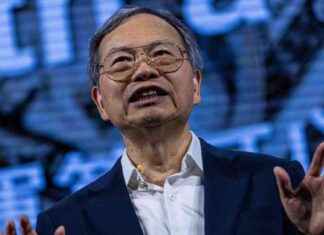Mass confinement, forced labor, sterilizations and cultural annihilation: these are the accusations made by human rights organizations against China in Xinjiang.
• Read also – Human rights: the UN begins its visit to Xinjiang
Beijing denies any persecution of Muslim minorities in the far eastern province of the country, and maintains that its policy there has eradicated terrorism and revived the local economy.
The United States says China is committing “genocide” against the Uighurs – who make up nearly half of Xinjiang’s population of 12 million – and has imposed sanctions in response. China vigorously denies and calls these allegations “the lie of the century”.
According to several researchers, the Chinese authorities have interned more than a million Uyghurs and other people of Muslim ethnicity in detention centers and prisons in the province.
Beijing disputes this figure and explains that these are “vocational training centers” intended to combat Islamist radicalism.
But former detainees have testified to rape and torture inside these camps, and political indoctrination by Chinese officials, all framed by a pervasive surveillance system.
Guards equipped with tear gas, stun or stun guns and spiked batons police these centers surrounded by barbed wire and infrared cameras, according to government documents reviewed by AFP in 2018.
The leak of a series of government data, including a confidential file from 2019 known as the “Xinjiang Papers”, has provided insight into the extent of Beijing’s internment strategy.
Other documents obtained by University of Sheffield professor David Tobin and seen by AFP show how officials in the north of the region were mobilized to systematically target Muslims.
One of these documents is a manual published in 2016, detailing interrogation techniques and urging officials to beware of “wild” imams or “two-faced” religious followers.
China is also accused of enlisting Uyghurs in forced “labour transfer” programs linked to international supply chains of various sectors ranging from clothing to cars.
According to Beijing, these initiatives reduce poverty by providing well-paying jobs for low-income rural residents.
But research indicates that authorities forced tens of thousands of people to work in fields and factories in a system linked to detention camps.
Last year, the United States passed a law banning the import of products made by forced labor in Xinjiang.
In April, China said it had ratified two international conventions against forced labour.
Strict birth control measures in Xinjiang since 2017 – including quotas for sterilizations and IUD insertions – are part of a deliberate attempt to reduce births among ethnic minorities, say academics and NGO activists.
China has refuted these claims, arguing that the declining birth rate reflects regional economic development and changing social norms.
Population growth in some Xinjiang counties where many minorities live slowed sharply between 2017 and 2019, according to research papers citing local government statistics.
And this even as the central government has urged the population, mainly made up of Han, to have more children in order to avoid a demographic crisis.
China has waged a fight against Uyghur religious, cultural and linguistic practices in recent years, according to researchers and Uyghurs residing outside the country.
Some 16,000 mosques in Xinjiang, two-thirds of the total number in the province, have been destroyed or damaged under government policies since 2017, according to the Australian Strategic Policy Institute.
During a 2019 trip to the region, AFP journalists visited several holy sites that had been razed or given other uses.
Uyghurs have also reportedly been pressured not to speak their language and to abandon Islamic customs such as prayer, possession of holy books and the wearing of long beards.







